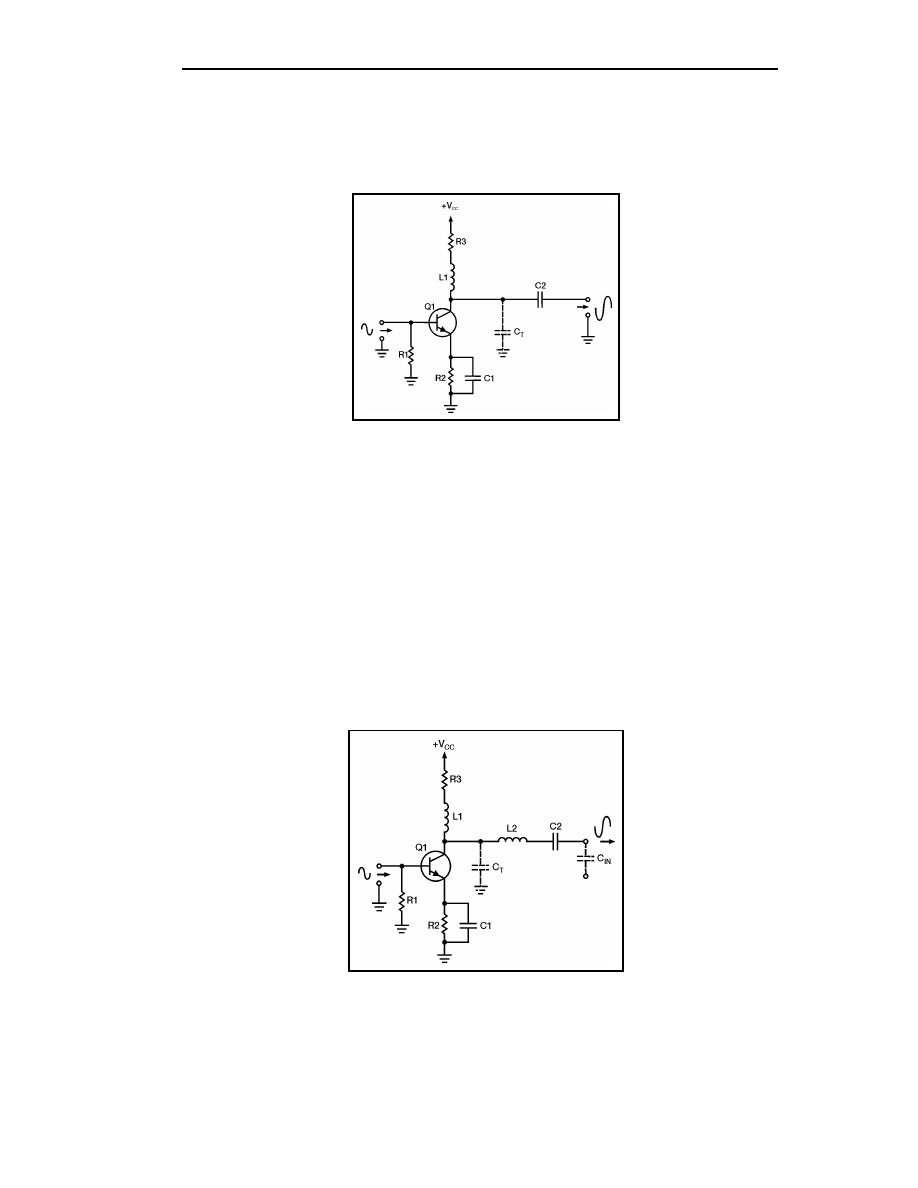
TC 9-62
output signal to ground. The increased inductive reactance counters the effect of the
decreased capacitive reactance and this increases the high-frequency response of the
amplifier.
Figure 6-6. Shunt Peaking Coil
Combination Peaking
6-34. You have seen how a series peaking coil isolates the output capacitance of an
amplifier from the input capacitance of the next stage. You have also seen how a shunt
peaking coil will counteract the effects of the total capacitance of an amplifier. If these two
techniques are used together, the combination is more effective than the use of either one
alone. The use of both series and shunt peaking coils is known as COMBINATION
PEAKING. Figure 6-7 shows an amplifier circuit with combination peaking. In Figure 6-7
the peaking coils are L1 and L2, L1 is a shunt peaking coil, and L2 is a series peaking coil.
Combination peaking will easily allow an amplifier to have a high-frequency response of
6 MHz.
Figure 6-7. Combination Peaking
6-10
TC 9-62
23 June 2005


 Previous Page
Previous Page
